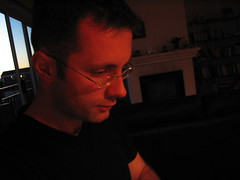
Click on picture to see slide-show.
No words of praise are usually associated with this country but there are a few things that put Honduras on the map: it is the home of the famous Copan archaeological site and the cheapest place in the world for diving.
The ancient Mayan city of Copan, while not as grandiose as Tikal, Calakmul or Chichen Itza, is unique in the Mayan world due to its carvings and stelae, whose level of detail and expression is unequaled anywhere else. We took many photos of them; the pictures are not very interesting artistically, but we wanted to capture a bit of the artistry and sophistication of this long lost culture for ourselves.
While on the road from Antigua, we decided not to spend the night in Copan; therefore we only had a couple of hours between buses, which made our trip to the ruins very short. As in most places frequented by the rich American tourists, the locals have wised up and started charged admission prices that may equal the weekly life expenses of a local family: $15 to visit the ruins, $15 to enter the archaeological tunnels (to see a temple excavated from under a newer temple, leaving the newer one intact) and $7 for the small museum. We chose to see only the ruins. If we had seen Copan earlier in our trip, we would have spend more time here, but by now we have seen eighteen archaeological sites, so one more or less didn’t make any difference.
We reached La Ceiba on the Caribbean side of the country that evening and the town offered a bleak and ominous sight. For the curious traveler with an open attitude, this is just a place like any other with secrets to reveal and a particular - albeit hard to discern - charm. For the tourist with a destination in mind, there is nothing to see here. Indeed, most travelers use this town as a base to take the ferry to the Bay Islands, and do not spend more than a night here. They would spend even less, but the bus arrives too late to catch the ferry.
Honduras is a very poor country, ranking in certain statistics as the second poorest in the western hemisphere (just before the all-time winner Haiti). The western tourist has trouble understanding why there is so much garbage littering the streets, in the narrow alleys between houses or in the ditches along the roads. “Why don’t these people clean it? What’s wrong with them?” (almost literal quote from Angela.) Coming from a country that had – and still has – to fight the same problem, I’m sort of an unwilling “expert” in the matter… the demons that plague the Hondurans are all too familiar; they are called “Not my business!” and “It don’t really matter either way”. Garbage is ubiquitous because people think that their house ends at their porch and if they shove the garbage in the street it’s… somebody else’s problem. And if they clean it… somebody’s going to throw some more in the ditch tomorrow, so… it don’t really matter either way. It’s a long way from here to understanding that only respect - of self and others - can change things.
But none of this should deter the keen traveler – there’s a bit of paradise waiting at the end of the road: the islands Utila and Roatan.




1 comment:
We spent the night at Copan but I was still too cheap to pay for the museum or the tunnels (and, actually, the triple billing sort of pissed me off). Copan is actually a really nice place to stay; it has a nice balance between tourist luxuries while still maintaining the flavor of a smaller mayan town.
I really want to spend more time in Honduras (we only went so far as Copan, which really doesn't count).
Post a Comment